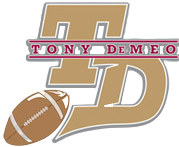Coaching Football’s Special Situations
By: Al Groh and Bob O’Connor
Every summer I would always re-read certain books to prepare for the upcoming season. This is one of those books. It’s written by two well respected coaches and it covers situations that have a direct bearing on winning and losing. Bob O’Connor has been a football coach for over forty years at all levels and he certainly has a wealth of experience. Al Groh has been the head coach and the New York Jets. Prior to becoming the head coach of the Jets, he was Bill Parcells’ assistant. Parcells is one of the coaches that really had a handle on what was important to win football games. Groh was also the head coach at Wake Forest University and had numerous assistant positions during his career.
This book, Coaching Football’s Special Situation, covers the key areas that are often overlooked because they are not often talked about by the TV expert or analyst. The authors do a great job of explaining why each area they cover is important. I’ve talked often about meaningful stats and Groh and O’Connor are on point with their breakdown. They stress the importance of detailed preparation in game planning and practice planning.
This book talks about “hidden stats†– each lost fumble is worth 40 yards of total offense. This is one more way of showing the importance of ball security. The total offense stat (meaningless stat) is really only important if you hold onto the ball.
The next area they talk about is avoiding penalties. Every coach knows penalties can kill you but some are out of your control. But there is no question you have demand focus on what you can control like illegal procedure penalties or personnel fouls.
Turnover Ratio is to me the most important of all stats. In my 25 years as a head football coach, we were undefeated with a + 2 turnover margin. Bill Parcells was big on the importance of winning the turnover battle. He felt +3 made your team a sure bet to win. Parcells felt you had to have an attitude on defense to create turnovers. He also believed you must spend time working on pressuring the ball by doing strip drills, batting passes at the line of scrimmage and working breaking on the ball. Always emphasizing getting a hat on the ball and the second man in strip or punch is critical to creating turnovers. The quarterback is vulnerable in the pocket and can be stripped when being pressured. Of course the emphasis on ball drills in the secondary also produces turnovers.
The next area the authors go into is big plays. They felt that a good scouting report could reveal where their opponent’s defense was vulnerable to the big play. Once you know their weak spot then it’s a matter of game planning on how to exploit it. Conversely on defense you must avoid giving up the big play.
Third downs are the next area discussed. Third downs are a game within itself. Of course controlling third down is the key to moving the chains or getting the ball back. Two good coaching points is to carefully script practice based on opponent tendencies and always have a 3rd and 9 pass available. Parcells seems to be the inspiration of this book and he was a big believer in controlling the clock, and third down is the key to clock control.
The blitz has become a key area in today’s football world. The Zone Blitz has been one of the major innovations in modern football. On defense you want to attack their protection and defend their hot receivers. You want to force them to keep their receivers in to block. On offense your team must be ready to pick up the blitz and to exploit it.
Everybody knows the importance of the scoring zones. Being productive in the Red Zone and on the goal line is certainly critical to a team’s success. Getting in the end zone and keeping your opponent out of your end zone breaks down the game to its simplest denominator. Know your opponent and practice in those areas.
The authors also go into the various areas of the kicking game; devoting a separate chapter to the kick off, the kickoff return, the punt and the punt return. They also cover the kick scoring game.
I recommend this book because it causes you to think about important aspects of the tactics of winning football. The book is valuable regardless of the particular schemes you use. In my copy, I scribbled notes throughout the book reminding me of specific things I wanted to practice or how to be just a little more detailed in my preparation. The authors do a great job with this book and you get the added benefit of the Bill Parcells influence.
Tony DeMeo
